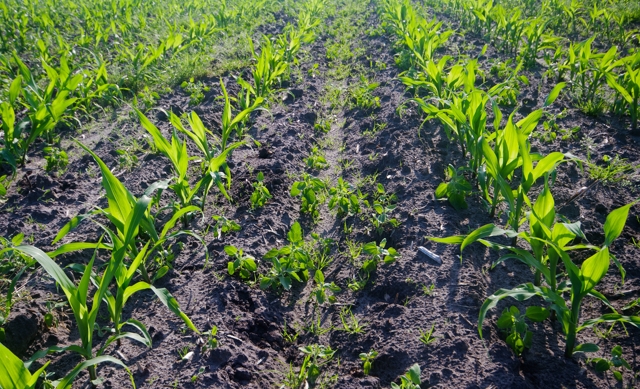Looking into herbicide resistance
 PRODUCTION ADVICE - MAY 2020 - AGRONOMY
PRODUCTION ADVICE - MAY 2020 - AGRONOMY
By John Fowler
Extension Agronomist
P: 03 5881 9933 | M: 0427 079 138 | E: john.fowler@lls.nsw.gov.au
 Herbicide resistance management may not be a high priority for local cereal growers – but perhaps it should be. Failure to implement resistance management practices early will allow the problem to quickly develop into a major concern – one that can’t be ignored.
Herbicide resistance management may not be a high priority for local cereal growers – but perhaps it should be. Failure to implement resistance management practices early will allow the problem to quickly develop into a major concern – one that can’t be ignored.
In order to manage herbicide resistance, three areas need to be considered. They are:
- Selecting the most appropriate herbicides
- Use of non-herbicide, agronomic practices that reduce weed seed set
- Use of post-harvest weed seed reduction techniques.
Adequate herbicide resistance management requires that at least two of these functions need to be implemented. Attempting to manage weeds with just one approach (such as relying exclusively on herbicides) is the quickest way of allowing herbicide resistance to gain a major foot hold.
One grower group, the Central Murray Ag Group, is working with Murray Local Land Services to investigate the impact of implementing several strategies to manage crop weeds, especially annual ryegrass.
The group has set up several ‘focus paddocks’ in the Mathoura-Caldwell area to investigate the impact of various management techniques on weed growth. Some of the treatments that will be monitored include:
- Selecting robust herbicides: Herbicide comparisons include:
- Comparing standard pre-emergent herbicides (trifluralin, Sakura®, Boxer® Gold)
- Comparing prosulfocarb (e.g. Arcade®) against standard pre-emergent herbicides
- Comparing tank mixtures of prosulfocarb and trifluralin with standard pre-emergent herbicides (WA experience is that the mixtures are significantly better than either herbicide applied alone).
- Agronomic practices: Non-herbicide practices being examined include:
- Evaluating the impact of higher seeding rates on weed population
- ‘Autumn tickle’ to stimulate weed germination, then knockdown prior to sowing.
- Post-harvest weed seed reduction: Techniques to be investigated include:
- Use of ‘chaff lines’ at harvest to direct weed seeds into rows
- Autumn stubble burn.
It’s encouraging to see this group proactively evaluating management techniques for handling herbicide-resistant weeds. They attempted to do similar work last year, but the season wasn’t conducive to getting good results. As an alternative, they went on a four-day tour of southern and central NSW to see how other landholders are addressing the problem. They went on a similar tour to Western Australia in 2017, which convinced them of the need to keep addressing the problem of herbicide resistance.
‘Integrated Weed Management’ Handbook
NSW Department of Primary Industries (NSW DPI) was funded by the Grains Research and Development Corporation (GRDC) to produce an ‘Integrated Weed Management’ handbook. The Central Murray Ag Group held a workshop at Bunnaloo last season on the information contained in the handbook, which includes a range of methods for managing weeds. An electronic copy of the handbook is available by clicking this link, and a limited number of hard copies are available by contacting me at Murray Local Land Services on 0427 079 138 or john.fowler@lls.nsw.gov.au.
Results from this year’s focus paddocks will be presented at farm walks throughout the seasons and at a post-harvest workshop early next year.